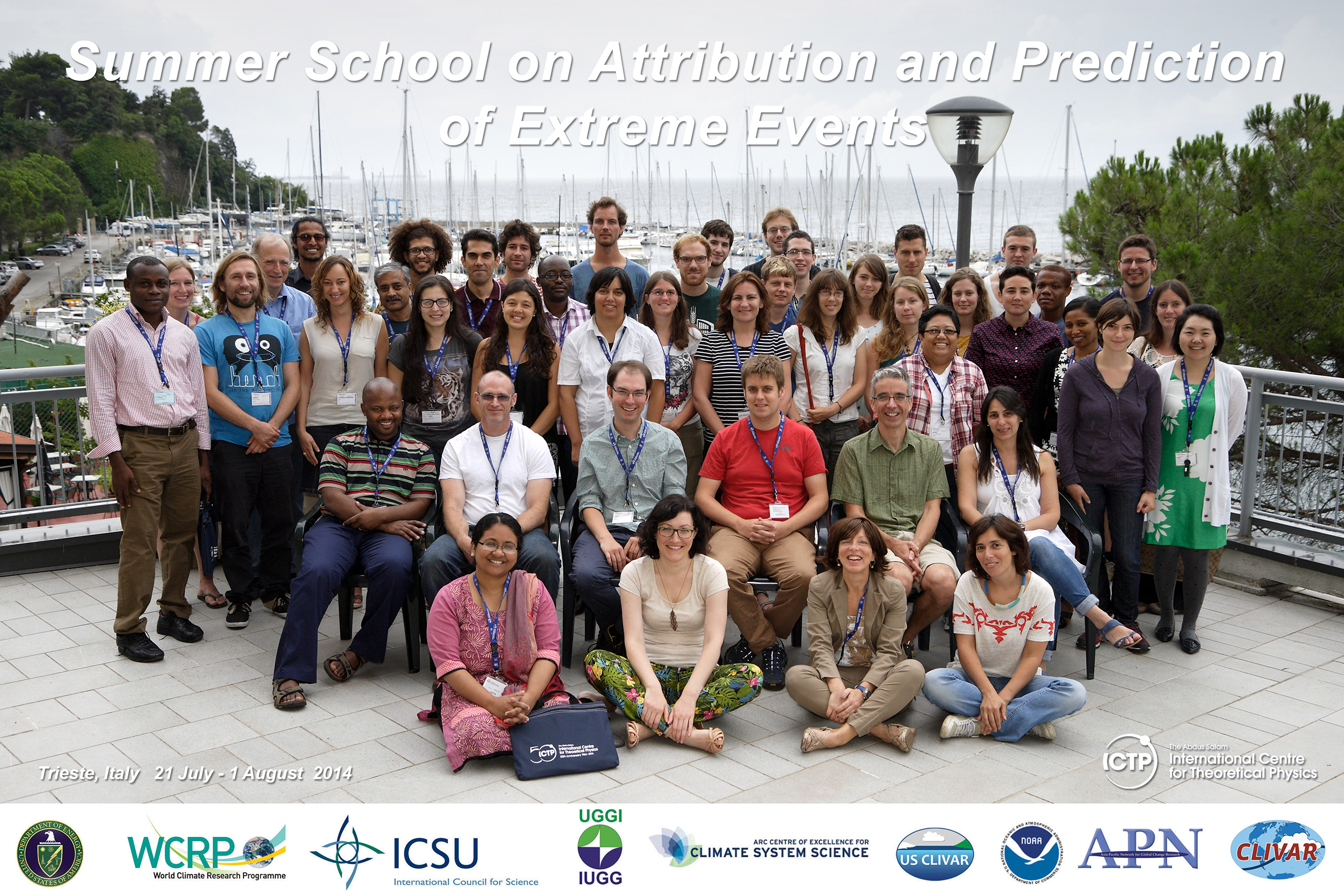Week 1
References:
What is an extreme event?
- WMO (2014) Atlas of Mortality and Economic Losses
- Bureau of Meteorology Special Climate Statements (for Australia for 2009 to the present)
Climate Modes of Variability Outreach materia
- The Climatedogs: the four drivers that influence Victoria (Australia) climate
- The Pacific adventures of the climate crab
Statistical Theory
- Eric Gilleland's home page provides very useful references: http://www.ral.ucar.edu/~ericg/spatialextremes.php
Extreme Value Theory
- Bernard, E., Naveau, P., Vrac, M., and Mestre, O. (2013). Clustering of maxima: Spatial dependencies among heavy rainfall in France. Journal of Climate 26, 7929–7937.doi: http://dx.doi.org/10.1175/JCLI-D-12-00836.1
- P. Naveau, A. Toreti, I. Smith and E. Xoplaki.. A fast non-parametric spatio-temporal regression scheme for Pareto distributed heavy precipitation. Water Resources Research. DOI: 10.1002/2014WR015431, 2014.
- Naveau, P., Guillou, A. and Rietsch, T. (2014), A non-parametric entropy-based approach to detect changes in climate extremes. Journal of the Royal Statistical Society: Series B (Statistical Methodology). doi: 10.1111/rssb.12058
- T. Rietsch, P. Naveau, N. Gilardi and A. Guillou, Network design for heavy rainfall analysis, Journal of Geophysical Research: Atmospheres, DOI: 10.1002/2013JD020867
Week 2
References
Detection and attribution
- Good Practice Guidance Paper on Detection and Attribution Related to Anthropogenic Climate Change, 2010
Citation: Hegerl, G.C., O. Hoegh-Guldberg, G. Casassa, M.P. Hoerling, R.S. Kovats, C. Parmesan, D.W. Pierce, P.A. Stott, 2010: Good Practice Guidance Paper on Detection and Attribution Related to Anthropogenic Climate Change. In: Meeting Report of the Intergovernmental Panel on Climate Change Expert Meeting on Detection and Attribution of Anthropogenic Climate Change [Stocker, T.F., C.B. Field, D. Qin, V. Barros, G.-K. Plattner, M. Tignor, P.M. Midgley, and K.L. Ebi (eds.)]. IPCC Working Group I Technical Support Unit, University of Bern, Bern, Switzerland. - Climate Change Science 2013 Haiku, G. Johnson
Event attribution
- Allen, Liability for Climate Change, Nature, 2003
- Stott, Stone, Allen, Human contribution to the European heatwave of 2003, Nature, 2004.
- The Recent Storms and Floods in the UK - briefing report released by the Met Office in February 2014



